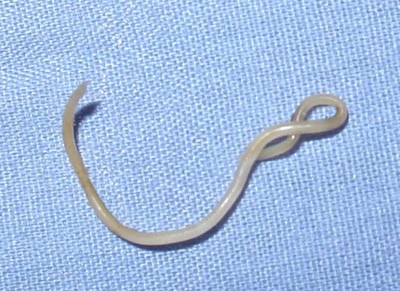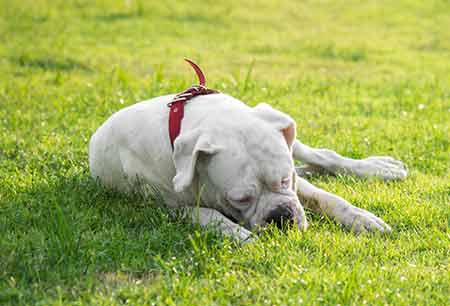All species have their own unique parvovirus that cannot be spread outside of the species.
It is evident that parvovirus cannot be spread from a cat to a dog or from a bird to a cat. However, it can be spread by contact. For instance, if your cat would wander through your neighbor's yard and would pick up the virus on her feet, she can track it inside of your house and infect your dog. Sadly enough, my neighbour's puppy contracted parvo virus. The puppy had all of the classic dog parvo symptoms, yet my neighbour really did not know what was wrong until he took the puppy to the vet. Once he did that, treatment began immediately. After several days of intensive treatment, the puppy was free to come home.
The parvo virus works in two ways either through the intestines or through the heart. When a dog gets an intestinal infection, it is picked up by the animal through oral contact with contaminated feces. Simply put, your dog would have to come into contaminated feces from another dog. The intestinal dog parvo symptoms occur when the virus attacks the bone marrow, rapidly dividing cells in the intestinal crypts and the lymph nodes. This allows normally occurring bacteria from the intestines to enter the blood stream to make the animal septic. The virus can be shed in the stool for up to three weeks thus making this a very contagious disease for pets that have not been inoculated.
The cardio form of this infection is often seen in puppies that are infected from the womb or shortly after birth. It is well worth noting that the cardiac form of CPV is not as common since the mother passes immunity on to her puppies from birth. The parvo virus then attacks the heart in the infected pup and death results shortly thereafter.
Dog parvo symptoms usually present themselves within 3 to 10 days of contact. They include the following: lethargy, vomiting, fever and diarrhea. The diarrhea can cause severe dehydration and secondary infections. The dog will not usually die from the virus but from a secondary infection.
Survival rate depends on how quickly CPV is diagnosed and treatment is begun. When the case is not caught early the best treatment option is an IV through which fluids are pushed to re-hydrate the animal more quickly, in addition anti-nausea and antibiotic shots may be given intramuscular. The prognosis is good with proper care but an absolute death sentence without it. There have been a few reports that the human antiviral, Tamiflu, can be effective in treating CPV but there are no studies to substantiate this. A veterinarian will advise you to give your pet a parvo shot about eight weeks after they are weaned. With the prevalence of the virus and its ability to kill some precaution should be taken to protect your canine.

 Roundworms in Dogs: Symptoms, Treatment, and Prevention
What are roundworms?
Roundworms
Roundworms in Dogs: Symptoms, Treatment, and Prevention
What are roundworms?
Roundworms
 Why Does My Dog Eat Grass?
The fact is that even if your dog h
Why Does My Dog Eat Grass?
The fact is that even if your dog h
 Canine Liver Disease Diet – What To Give To My Dog?
Detect
Canine Liver Disease Diet – What To Give To My Dog?
Detect
 Four Tips For Choosing Edible Dog Chews
Dogs love to chew, and if you don’t give them an edible alte
Four Tips For Choosing Edible Dog Chews
Dogs love to chew, and if you don’t give them an edible alte
 The crucial role of communication between breeders
A number of years ago, I was lucky
The crucial role of communication between breeders
A number of years ago, I was lucky